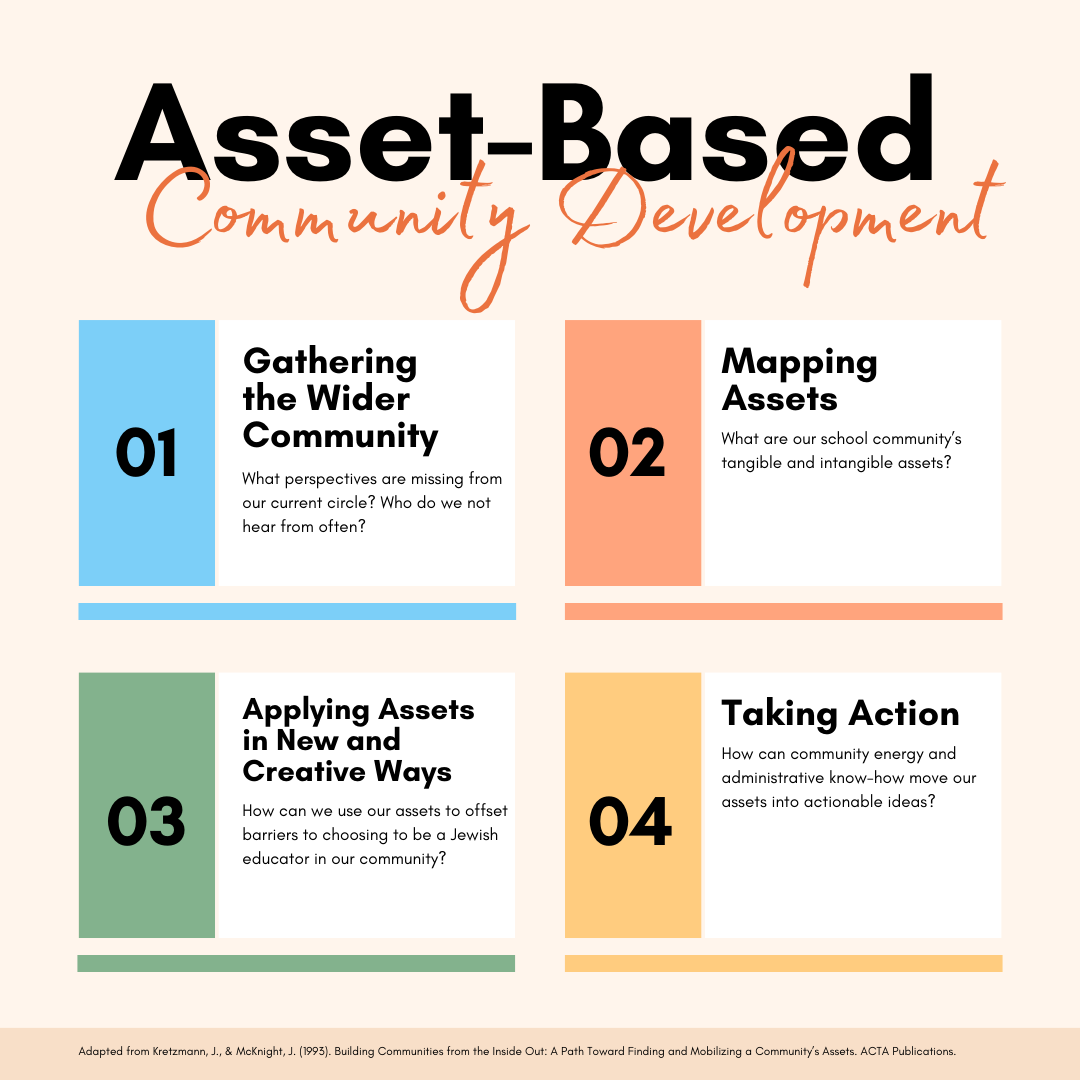Did you always know you wanted to be a Jewish educator? I didn’t. I was working in a lab doing Parkinson’s research and studying to take the LSAT for my potential career in medical ethics when I found teaching. The university I was attending at the time recognized its biology majors’ love of science and flexible schedule. To capitalize on that energy and build capacity, the university placed biology majors as temporary science teachers in public school classrooms after providing a few introductory sessions and access to a closet full of supplies and lesson plans.
The invitation to try the work of teaching without prior teaching experience led me to fall in love with it. I went on to get a master’s in teaching and a certificate in Jewish education, teaching in public elementary and then congregational schools. Now, I am a doctoral candidate in educational leadership and organizational development, leading professional development and supporting schools in strategic planning. None of this was part of my original plan, but all of this has become central to who I am as a Jewish educator.
As a field, Jewish education needs to invite more people to fall in love with teaching, particularly those who do not initially see themselves as Jewish educators. I propose using a structured, research-based process called Asset-Based Community Development (ABCD) to do just that.
What is Asset-Based Community Development?
ABCD approaches communal problem-solving from an asset-based rather than a deficit-based approach. In ABCD, school community members (administrators, teachers, parents, students, board members, local association members, business partners and funders) collaboratively map physical, geographical, social and relational assets. Then, together, the group thinks creatively about combining those assets in new ways to address challenges. Putting tangible and intangible resources that are already present in school communities to work in creatively new ways reduces reliance on external resources that may not be sustained from year to year (such as single-year grant funding).
ABCD organizes community and school partnerships with clear steps that elevate collaboration while acknowledging the different roles, responsibilities and perspectives that exist in a school community. The prerequisites are being open to the ideas that many pathways could culminate in teaching at a Jewish day school and that those already invested in Jewish education can encourage more people to start the journey.
For Jewish education recruitment, ABCD can be used to make visible the people, places and resources that haven’t yet been considered as sources for attracting potential Jewish educators. If you are a current education leader in charge of hiring or part of the hiring process, you are already making choices about candidates’ pedagogical and content skill levels. You also know that professional development and mentoring support teachers in gaining the skills they need to be better teachers.
While we will always have to assess candidates’ teacher training and content knowledge levels, we also need more people to think about wanting to get that training and gain that knowledge. Applying ABCD to teacher recruitment can help school communities craft invitations so more people ask the question, “Is being a Jewish educator for me?”
Tackling recruitment to Jewish education at the community level has precedence. Research tells us that despite national trends of teacher shortages, there are local nuances to what those shortages look like and how they impact schools. Local (community-based) factors often offset fieldwide barriers to choosing to be a Jewish educator. Rather than focusing on what we lack, ABCD shifts the focus to what a school community has to offer. What are a local community’s assets that might reduce barriers to deciding to teach in Jewish education? ABCD can help us identify and apply those assets to rethink how we invite new educators into the field.





